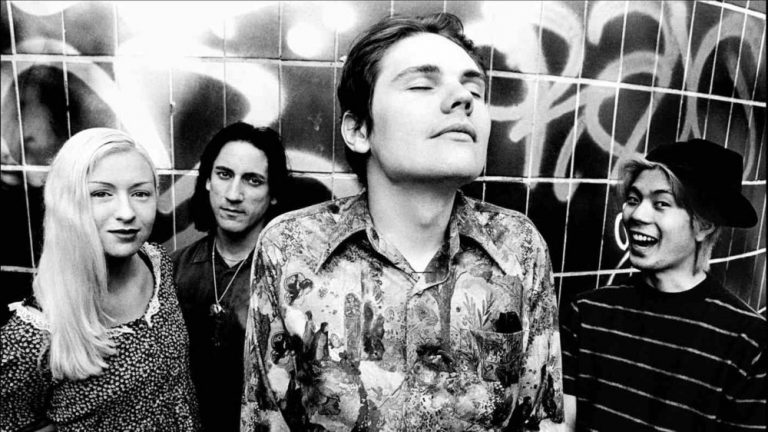Billy Corgan isn’t the easiest fellow to work with. The band had all but split up during the recording of their second album, Siamese Dream, due to Corgan’s domineering approach and his insistence on recording all the bass and guitar parts himself. Drummer Jimmy Chamberlin would disappear for days on heroin benders, bassist D’arcy Wretzky spent much of the time locked in the bathroom, and Corgan was actively planning his suicide during the drawn-out sessions. Something had to give for album #3, and it was producer Butch Vig. Corgan instead brought on Alan Moulder, the main engineer behind My Bloody Valentine’s unassailable Loveless, and U2 producer Flood, and the personnel shift immediately changed the vibe – despite poor Butch not actually being the problem at all.
Flood made the band record live demos in a recording space before hitting the studio, and urged them to practice together as a band. This was in stark contrast to the previous album, which once saw Vig and Corgan tinker with a 45-second section for 32 hours. No wonder being locked in a bathroom began to appeal. The band arranged and tightened songs in that rehearsal space, recording what would end up being used as the bulk of the album’s rhythm tracks. “The big change is that Billy is not being the big ‘I do this—I do that.’ It’s much better,” guitarist James Iha noted at the time.
Despite the live way in which the songs found their form, the album’s most successful track was built by Corgan on a drum machine near the death of the recording sessions, added at the eleventh hour. Flood wasn’t impressed by the song, which was at the time still just a melody snippet, a repeating chord pattern and a drum machine, and urged Corgan not to bother finishing it. This pissed him off, and he returned the following day with this demo – an aching coming-of-age tale written about the year Corgan turned 12. It was the final song written for the album.
Flood wasn’t impressed by the song, which was at the time still just a melody snippet, a repeating chord pattern and a drum machine, and urged Corgan not to bother finishing it.
This demo is a cruisier version of how the song would end up. A slightly slowed tempo removes the youth and urgency from the final version, but the drum machine must have appealed to Corgan and Flood, who built upon it using loops, drum machines and samples for the first time on a Pumpkins recording.
The song’s ubiquity makes it hard to hear just how weird a single this really is, but despite the lack of driving guitars, and Corgan’s most measured vocal, the song became an unlikely hit, and is now roundly considered one of the best songs from the ‘90s. Plus, the video clip looks like a trailer for the greatest Gen X film never made.


































